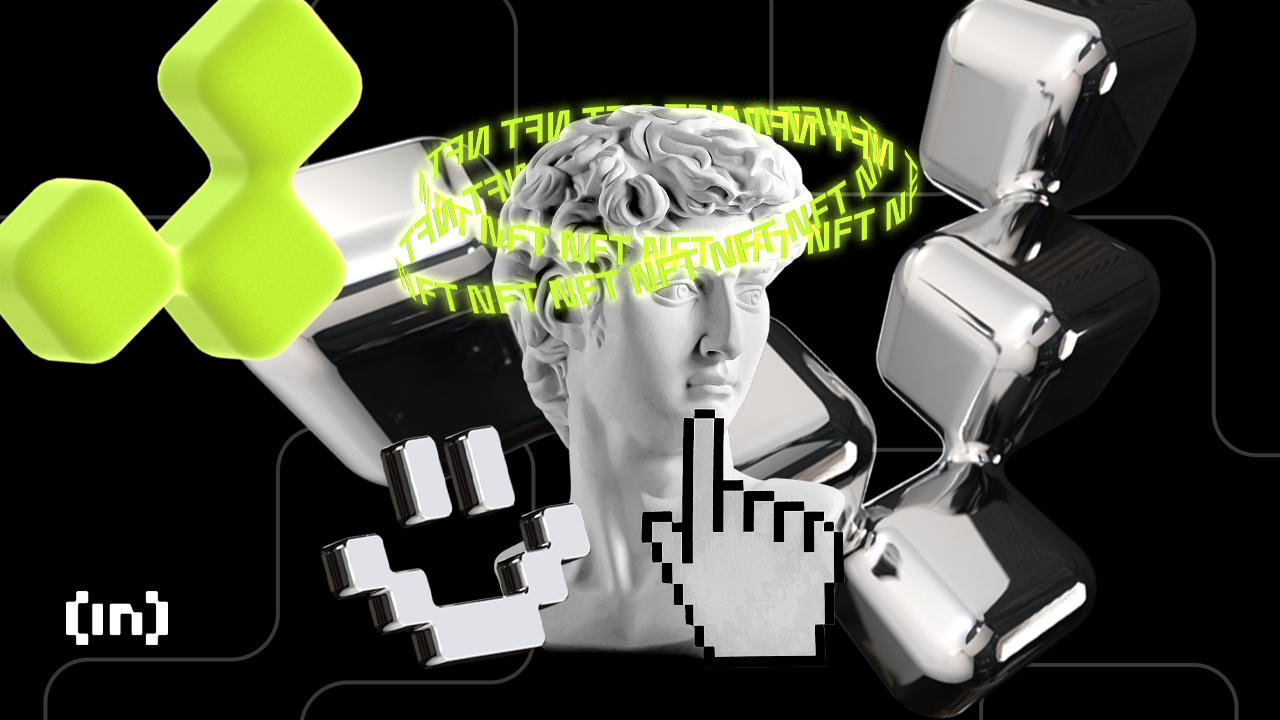The French collective GXRLS Revolution aims to bring more women into NFT art
It’s no secret that the crypto industry has a representation problem.
And that means so does the burgeoning crypto art world, according to the founders of digital art collective GXRLS Revolution.
“In terms of the lack of visibility of women, the state of crypto art is much worse than traditional art,” said curator, collector and co-founder of GXRLS Revolution Annelise Stern Decrypt.
Stern, Jessy Jeanne, along with three other curators, Joséphine Louis, Léa Duhem and Marie-Odile, selected 25 female and non-binary artists to create artwork for the occasion.
Exploring the theme of identity, the artworks offer a wide range of genres, inspirations and techniques.
Jenni Pasanen created a Pegasus-inspired piece of art by combining digital painting and artificial intelligence, while Elni Tomadaki exhibited a drawing that paid tribute to Magritte. Megan Laurent took a different point of view with her work blending self-portrait photography and AI.
The NFT exhibition “I am…” opened the week of International Women’s Day and became a hub where artists, visitors and collectors could gather to dive deep into the world of crypto art
GXRLS Revolution co-founders Annelise Stern and Jessy Jeanne. Source: Mattis Meichler/Decrypt.
By promoting only female artists, GXRLS Revolution wants to compensate for the lack of visibility they usually suffer from.
“A comparison tool I like is the following: last year the market for contemporary art reached a new milestone. Among artists under 40, women are at the top of the ranking. Nevertheless, in Web3, on Tezosfor example, there must be eight women in the top 100 artists, Stern said.
The latest NFT project from the co-founders was thus more than just presenting works from underrepresented artists.
It was also an examination of why the world of crypto art still suffered from so few female artists.
“I think that men shop in a group, collect each other’s artwork, without thinking too much,” said Jeane, co-founder of GXRLS Revolution, artist, curator and founder of Art from Future DAO. “Or, to some, they’re sexist.”
A few months ago they made a list of all female NFT artists to prove that there is no shortage of women in the field either.
What began as an excel file quickly turned into a 280-page book, cataloging female artists.
Still, they remember receiving harsh criticism for their project, especially for curating exhibitions only for women.
“We promote female artists only to highlight their value as possible role models for more women who dare to take the plunge,” insisted Jeanne. “But our events are open to all, men are welcome.”
The entrance to the IHAM Gallery in Paris. Source: Mattis Meichler/Decrypt.
NFT art finds friends in high places
For the exhibition “I am …” GXRLS Revolution had financial support from Jean-Michel Pailhon, a French collector and former head of Ledger.
In parallel with his professional activities and management of his digital and physical art collections, he founded a physical and online art gallery in Paris called Achetez de l’Art.
“As we regularly seek collaborations with curation teams, I studied GXRLS Revolution’s previous exhibitions and I found it very interesting with new and talented artists,” he said. “I like their approach and I already collect the artworks of some of the artists represented in IHAM Gallery’s exhibition. I thought it was important to help them so they could get started and not stress themselves out about the financial production part.”
He also sees it as a way to promote diversity. “As crypto art is an offshoot of the crypto asset sector, the environment was overwhelmingly male dominated,” he said.
An artwork from Jenni Pasanen. Source: Mattis Meichler/Decrypt.
However, given the nature of NFT art, this can easily be changed and make the space more inclusive.
“Crypto art or digital art in the chain can be seen as a response to traditional art which is more institutionalized and introverted,” Pailhon said. “It was very difficult for an artist to break through if he wasn’t in the right country, or the right city and didn’t know the right gallerist, the right agent, the right art dealer or the right museum curator.”
He is convinced that with NFTs all this will change.
“With a few clicks, works can be created, purchased, transferred and presented in exhibitions. Behind NFTs and Web3 in general is a notion of freedom, inclusion and “grassroots.”


